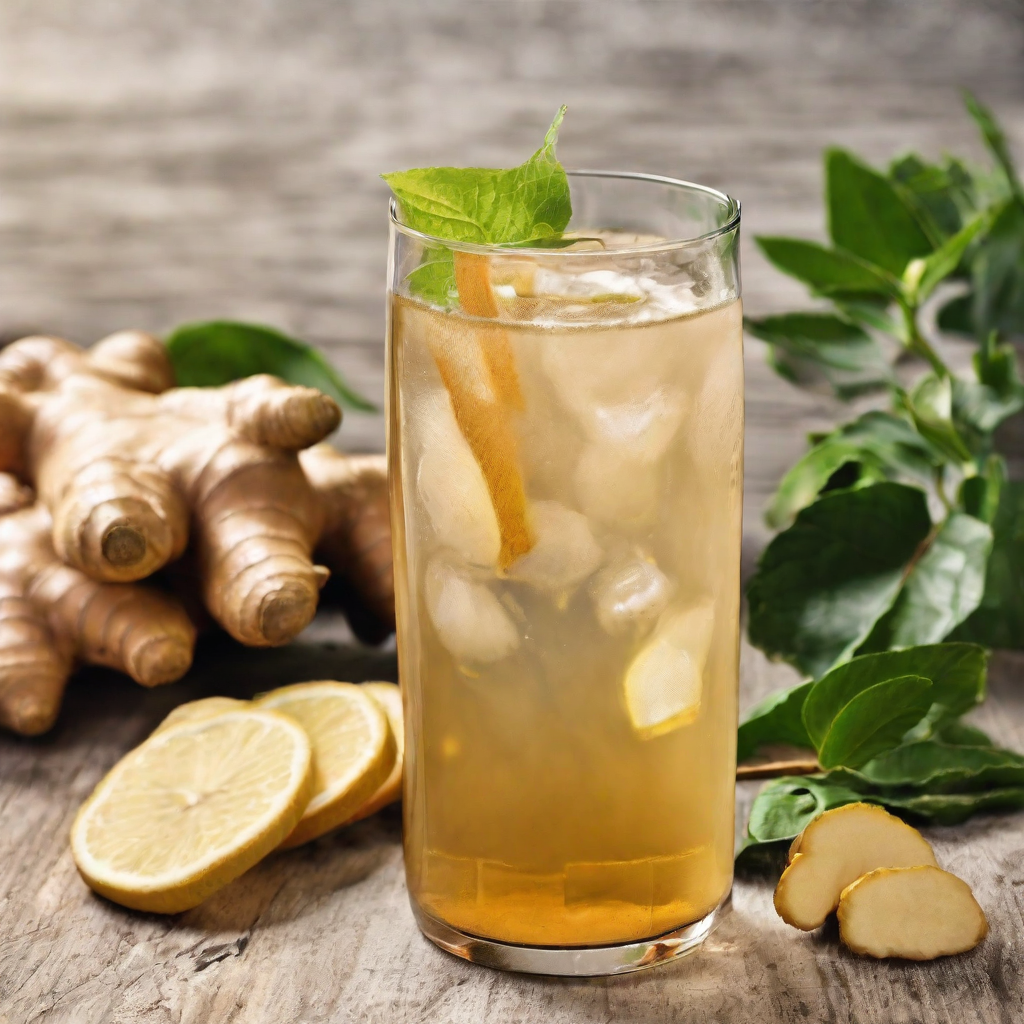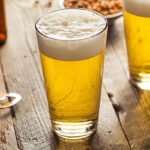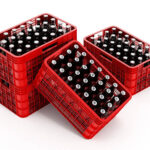Do you often crave a refreshing, zesty drink but are not sure which one to choose? If so, then ginger beer may be the perfect beverage for you. Recently gaining popularity, it has become an in-demand option among people of all ages. But does ginger beer have alcohol and what makes it different from other beverages out there? In this blog post we’ll uncover the answer and discuss all its nutritional benefits. Get ready to learn about why ginger beer is quickly becoming the go-to choice for health-conscious individuals around the world.
A Brief History of Ginger Beer Brewing

Ginger beer originated in England in the mid-1700s. Back then, it was brewed by combining ginger, sugar, water, lemon juice, and a starter culture known as “ginger beer plant.” This combination would undergo natural carbonation and fermentation for several days, resulting in an alcoholic beverage around 2-10% ABV.
By the late 1800s, commercial ginger beer production emerged. Manufacturers streamlined the process using technological advances like pressurized fermentation. This allowed ginger beer to be mass-produced while retaining its signature flavor, carbonation, and punch of alcohol.
However, laws eventually prohibited commercial alcoholic ginger beer. Non-alcoholic versions using pasteurization and artificial carbonation became popular. Most mainstream ginger beer today is non-alcoholic. But some smaller specialty brewers still use traditional fermenting methods.
Alcohol Content in Ginger Beer
|
Ginger Beer
|
Has Alcohol |
No (most commercial brands) or less than 0.5%
|
| Alcohol Content |
Varies by brand, typically 0% – 0.5%
|
|
| Flavor Profile | Spicy-sweet | |
| Use Cases |
Cocktail mixer, non-alcoholic drink ingredient
|
|
| Reason for Non-alcoholic Use | Low or no alcohol content | |
| Commercial Ginger Beer | Alcohol Content | Typically 0% |
| Classic Cocktails |
Ingredient
|
Ginger Beer
|
| Spirit-free Drinks | ||
|
Ginger Beer
|
Origin | 18th century England |
| Historical Alcohol Content | Around 11% |
Additional Notes:
- Consumers looking for strictly non-alcoholic options should choose “alcohol-free” ginger beer brands.
- The spiciness of ginger beer can vary depending on the brand and recipe.
- Ginger beer can also be enjoyed on its own or with a squeeze of lime juice.
Comparing Ginger Beer and Ginger Ale
Ginger beer is sometimes confused with ginger ale, but they are distinct beverages:
Ginger Beer
- Traditionally brewed, may be fermented
- Stronger real ginger taste
- Very spicy, bolder flavor
- Higher carbonation, thicker mouthfeel
- Often cloudy appearance
- May contain alcohol if fermented
Ginger Ale
- Carbonated soft drink
- Milder ginger flavor
- Lighter, more delicate taste
- Lower carbonation, thinner body
- Clear appearance
- Never contains alcohol
So ginger ale is a non-alcoholic soda, while ginger beer may or may not contain alcohol depending on the production method. Ginger beer also packs much more gingery spice and bite.
Potential Health Benefits and Considerations
The potential health effects of ginger beer relate mainly to its ginger content. Ginger root has long been used for its anti-inflammatory, digestive, and antioxidant properties in folk medicine and Ayurvedic traditions. Modern research also shows some promising findings:
Potential benefits:
- Reduce nausea, vomiting, upset stomach
- Soothe arthritis pain when consumed regularly
- Lower cholesterol and blood pressure
- Contain antioxidants that may reduce cell damage
Considerations:
- Ginger acts as blood thinner, so avoid combining with anticoagulant medications
- Excess ginger may cause heartburn, gas, or diarrhea
- Speak with doctor before using ginger beer medicinally
However, more research is still needed to fully understand ginger’s health effects. Overall, ginger beer in moderation can provide hydration, antioxidants, and subtle ginger benefits without major health concerns. Those with alcohol sensitivities should consume only non-alcoholic versions.
Nutritional Profile of Ginger Beer
See more : How Long Does Beer Last In A Keg? | Get The Answers Here
One 8 oz serving of non-alcoholic ginger beer contains approximately:
- 120 calories
- 31 g sugar (from added cane sugar)
- 30 mg sodium
- 28 g carbohydrates
- 0 g protein
- 0 g fat
Ginger beer is considered a high sugar, high calorie soft drink. The carbohydrates and calories come predominantly from added cane sugar. There are negligible amounts of protein, fat, fiber, vitamins, or minerals. However, the real ginger root does provide plant compounds like gingerols, shogaols, and zingerone that act as anti-inflammatories and antioxidants. Overall, ginger beer offers refreshing flavor and hydration, but is best enjoyed in moderation due to its high sugar and calorie content.
Labeling Regulations for Alcohol Content
In the United States, The Alcohol and Tobacco Tax and Trade Bureau (TTB) regulates alcohol labeling on ginger beer and other beverages. Key regulations include:
- Any beverage over 0.5% ABV is considered an “alcoholic beverage” and cannot be labeled as “non-alcoholic.”
- Beverages under 0.5% ABV may be labeled “non-alcoholic” or “alcohol-free.”
- Any beverage containing over 0.5% ABV must list the alcohol percentage prominently on the label.
- Terms like “low-alcohol” or “reduced alcohol” on labels must indicate alcohol amount.
- For under 0.5% ABV, alcohol percentage does not need to be listed, but labeling cannot mislead about alcohol presence.
So if ginger beer contains over 0.5% alcohol, it must clearly state the alcohol by volume percentage on the packaging. This helps consumers make informed decisions about alcohol content.
How to Check Labels for Alcohol Content?

When buying ginger beer, here are some tips for assessing alcohol content from the label:
- Look for clear “non-alcoholic” wording – this indicates less than 0.5% ABV.
- Check for an ABV percentage – any over 0.5% must list exact alcohol percentage.
- Beware of ambiguous labels – terms like “refreshing taste” or lack of alcohol info may signal trace alcohol.
- Know country regulations – some countries allow up to 2% ABV in “non-alcoholic” drinks. Check limits.
- When in doubt, ask – don’t hesitate to inquire with the manufacturer or seller about alcohol content.
- Check craft/artisanal brands closely – these tend to use traditional methods and may contain residual alcohol from fermentation.
- Test for alcohol taste – tiny amounts may have minimal flavor, but you can sample for boozy taste.
- Avoid if avoiding alcohol – if you need to strictly avoid alcohol, only drink ginger beers clearly labeled “non-alcoholic.”
Reading labels closely and contacting the producer if alcohol information is unclear are the best ways to determine if a ginger beer contains alcohol. When in doubt, traditional and small-batch options are most likely to have trace alcohol if that is a concern.
Recommendations for Avoiding Alcohol
For those wishing to avoid alcohol completely, here are some tips when selecting ginger beer:
- Check “non-alcoholic” labels – this is the safest bet.
- Prefer major commercial brands – mass-produced ginger beers use modern non-alcoholic methods.
- Avoid craft-brewed varieties – artisanal ginger beers may undergo fermentation.
- Ask restaurants/bars if unsure – inquire about ginger beer brands and alcohol content.
- Read mixed drink ingredients – ginger beer cocktails may contain alcoholic mixers or fermented ginger beer.
- Make your own non-alcoholic ginger beer – DIY versions allow you to control the fermentation.
With vigilance reading labels and inquiring about ambiguous drinks, it’s possible to fully avoid alcohol while still enjoying ginger beer’s spicy tang.
The Range of Ginger Beer Options
Ginger beer is available in a wide spectrum of styles:
Artisanal/Craft Ginger Beers
- Small-batch production
- Use traditional brewing techniques
- Often involve active fermentation
- More complex, nuanced flavors
- Higher quality ingredients
- May contain trace alcohol
Commercial Mass-Produced Ginger Beers
- Large-scale production
- Use modern non-alcoholic methods
- Rely on artificial carbonation
- More uniform flavor
- Lower cost
- No alcohol
Flavored and Spiced Ginger Beers
- Include added flavors like lemon, lime, berries
- Spiced versions with cinnamon, cloves, vanilla
- Flavors complement ginger zing
Alcoholic Ginger Beers
- Higher ABV like original ginger beer
- Considered hard ginger beers or ginger ales
- Available in some areas but limited
The range includes artisanal microbrews, popular mass market brands like Canada Dry and Vernor’s, additional flavors like lemon-lime, and the occasional alcoholic version.
Homemade Ginger Beer
See more : How Many Beers In A Case? Types Of Beers In A Case
It’s fairly simple to make basic ginger beer at home. Here is an overview:
Ingredients
- Fresh ginger root
- White sugar
- Lemon juice
- Water
- Champagne yeast (for carbonation, non-alcoholic)
Process
- Peel and grate ginger, steep in boiling water to extract flavor.
- Add sugar while water is hot to dissolve, then cool liquid.
- Add lemon juice and yeast once cooled to room temperature.
- Allow to sit 1-3 days in an airtight bottle for carbonation.
- Refrigerate after fermenting to stop yeast activity.
- Strain out ginger pieces and rebottle for storage.
Tips
- Use less yeast and ferment less time to reduce alcohol production.
- Refrigerate quickly to halt fermentation once desired carbonation is reached.
- Burp bottles daily to vent excess carbon dioxide.
- Add spices, sweeteners, or fruit juices to taste after initial fermentation.
With some trials to perfect your preferred flavor and fizziness, homemade ginger beer can be even better than store-bought.
Cultural Variations of Ginger Beer
Ginger beer originated in England but traditional fermented ginger drinks exist across many cultures:
- Jamaica – called ginger beer or sorrel, popular Christmas drink made with fermented ginger, rum optional
- India – kanji is a fermented ginger lemonade drink
- Nigeria – often made with Nigerian ginger, mixed with fruit juices
- Asia – variations like bandung from Indonesia with milk and rose syrup
- Latin America – ginger is mixed with other fruits like passionfruit or pineapple
- Caribbean Islands – strong gingery flavors, often combined with rum
No matter where ginger beer is brewed regionally, the unifying ingredient is real ginger root. Locally available sugars, fruits, and spices create unique cultural variations.
Pairing Ginger Beer with Food
Here are some delicious food pairings that complement ginger beer’s spicy-sweet profile:
- Fried foods like tempura, calamari, or shrimp
- Sushi and sashimi
- Spicy Asian dishes like pad thai or curry
- Barbecue like pulled pork or ribs
- Grilled meats and shrimp
- Sharp aged cheeses
- Chocolate desserts or molten lava cake
Ginger beer’s sugar and spice balance out rich, fatty, or spicy flavors. Its acidity also cuts through fried and salty foods. Try splicing in ginger beer instead of regular soda or alcohol for food pairings.
Storing and Preserving Ginger Beer
To maintain carbonation and prevent over-fermentation:
- Non-alcoholic ginger beer keeps 1-2 months refrigerated in a sealed container.
- Alcoholic ginger beer lasts 6-12 months at room temp in a cool, dark place. Refrigerate after opening.
For homemade ginger beer:
- Refrigerate immediately after desired carbonation is reached to halt yeast activity.
- Use flip-top bottles or release carbonation daily to prevent dangerous bottle explosions.
- Add preservatives like potassium sorbate if storing long term.
Properly stored, both commercial and homemade ginger beers stay fresh and flavorful for a substantial time.
Conclusion: Does Ginger Beer Have Alcohol
While traditional ginger beer formulas created an alcoholic beverage through fermentation, most modern commercial ginger beers are non-alcoholic. However, some artisanal producers use old-fashioned techniques and allow active fermentation, lending trace alcohol content in certain ginger beers. Reading labels closely, asking sellers, and understanding production methods help discern alcohol levels. With an array of flavors from spicy to sweet, ginger beer offers complexity to cocktails and bright flavor to pair with various foods. For those wishing to avoid alcohol, checking “non-alcoholic” labels provides assurance, but when in doubt, home brewing your own ginger beer allows control over alcohol production.

Ronald B Gamrot is the owner of Silverking Brewery, one of the most successful craft breweries in North America. He started the business from scratch in his garage, and it has since grown into a multimillion-dollar operation. Ronald is passionate about brewing delicious beer and providing top-notch customer service. He is a respected member of the brewing community and often speaks at industry events.








Ginger beer, like root beer, was traditionally brewed with yeast and was not necessarily non-alcoholic
Originally it did. I’ve made my own using shredded ginger, sugar, and yeast in a bottle for a week or so and it gets up to around 3 or 4 percent alcohol.
Even though Ginger beer is non-alcoholic it is a fermented brew drink.
Thanks for taking the time to comment.
Thanks for taking the time to comment.
Thanks for taking the time to comment.